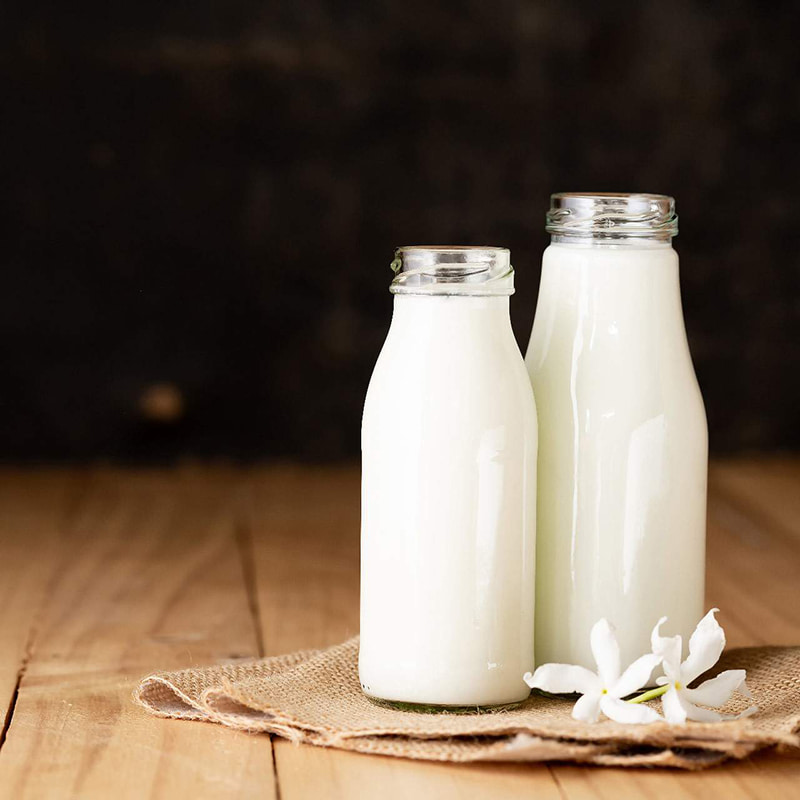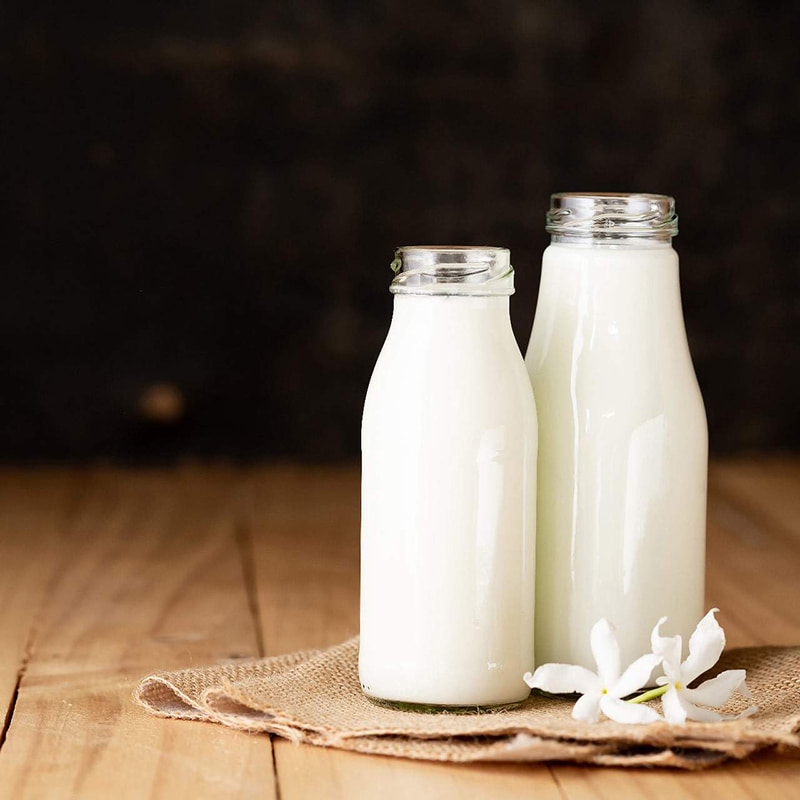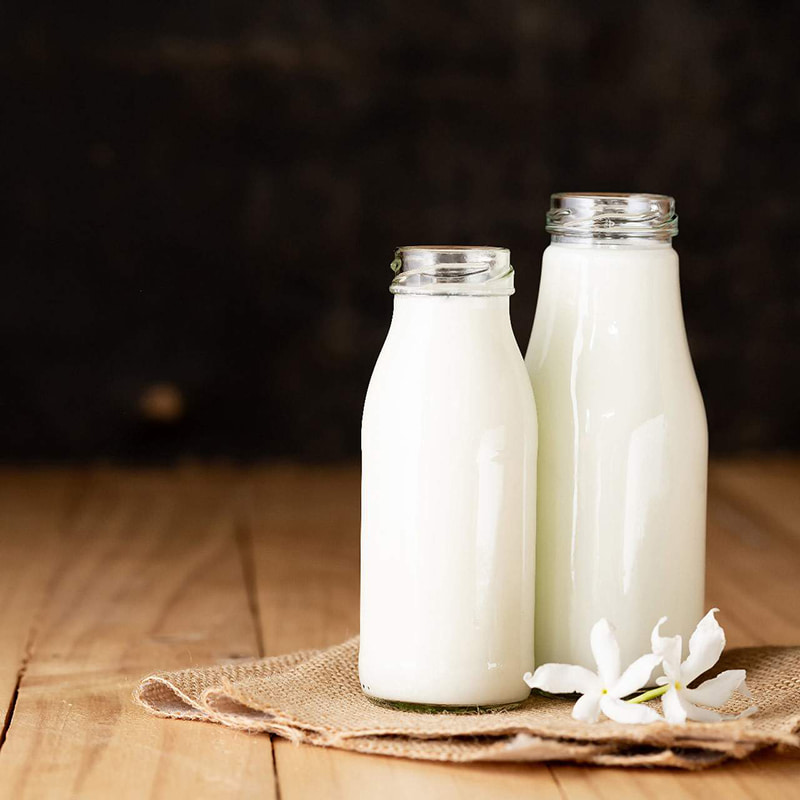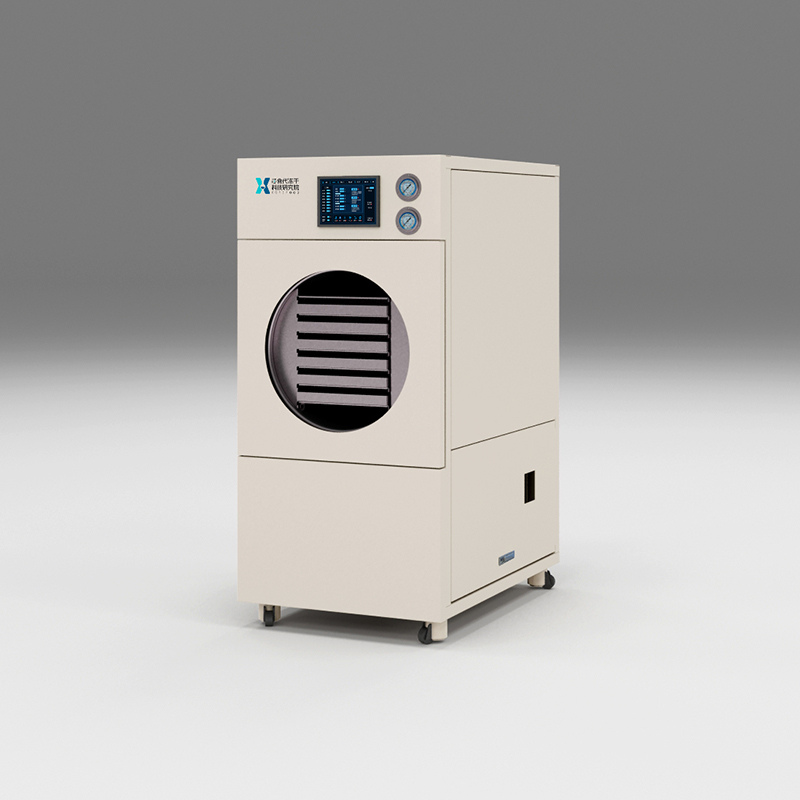How does the energy consumption of freeze-drying equipment for dairy products compare to traditional processes such as spray drying?
Overview of Freeze-Drying Equipment for Dairy Products
Freeze-drying equipment for dairy products is designed to remove water content while preserving structural and nutritional properties. The process relies on freezing the product and then applying a vacuum to enable sublimation, in which ice converts directly into vapor without passing through the liquid stage. This ensures that dairy powders, such as milk powder, whey protein powder, and specialty dairy-based ingredients, maintain their functional properties, solubility, and flavor. However, the complexity of refrigeration systems, vacuum chambers, and heating mechanisms makes freeze-drying more energy-intensive compared to traditional drying methods like spray drying.
Principles of Spray Drying for Dairy Products
Spray drying is one of the most widely used conventional methods for producing dairy powders. In this process, liquid dairy is atomized into small droplets, which are then exposed to a stream of hot air, rapidly evaporating the moisture. The end product is a dry powder collected at the bottom of the drying chamber. Spray drying requires high temperatures but is relatively quick and less energy-demanding per unit of processed product. This difference in operating principles directly contributes to contrasting energy consumption profiles between spray drying and freeze-drying equipment for dairy products.
Energy Consumption Characteristics of Freeze-Drying
Freeze-drying is inherently energy-intensive because it requires several stages: deep freezing, vacuum generation, sublimation, and secondary drying. Each stage consumes considerable energy, especially refrigeration and vacuum pumping. While energy demand is high, freeze-drying provides superior product stability and retains delicate proteins, vitamins, and flavors in dairy products. This makes it suitable for high-value dairy applications where quality preservation is more important than minimizing energy costs.
Energy Consumption Characteristics of Spray Drying
Spray drying relies primarily on thermal energy to evaporate water quickly. The use of hot air is the dominant energy consumer, while atomization and air handling systems also add to energy demand. Although spray drying involves high-temperature input, the process is faster and less energy-demanding overall compared to freeze-drying. The trade-off lies in product quality, as heat-sensitive components in dairy products can degrade during spray drying.
Comparative Energy Use Between Freeze-Drying and Spray Drying
The energy required for freeze-drying is significantly higher than spray drying on a per-kilogram basis. This is due to the need for refrigeration to achieve freezing, vacuum generation to maintain low pressure, and prolonged sublimation time. Spray drying, although energy-demanding during the evaporation phase, achieves moisture removal in a shorter time frame and with fewer energy-intensive stages. The following table provides an approximate comparison of energy consumption:
| Process | Energy Consumption Range | Key Contributors |
|---|---|---|
| Freeze-Drying | 800–1200 kWh/ton | Refrigeration, vacuum pumping, sublimation heating |
| Spray Drying | 400–600 kWh/ton | Hot air generation, atomization, exhaust systems |
Impact of Batch Size on Energy Efficiency
Batch size directly affects energy efficiency for freeze-drying equipment used in dairy products. Smaller batches in large chambers tend to waste energy, as refrigeration and vacuum systems must still operate at full capacity. On the other hand, spray drying systems are more flexible in handling varying batch sizes with relatively minor changes in energy use per kilogram. Optimizing production schedules and maintaining appropriate batch sizes are therefore crucial for energy management in freeze-drying.
Influence of Product Moisture Content
The initial moisture content of dairy products also influences energy demand. Freeze-drying requires longer sublimation times when processing liquids or high-moisture materials, such as whole milk or cream. Spray drying, due to rapid hot air contact, can remove moisture more efficiently from liquids with high water content. However, dairy powders requiring delicate preservation of bioactive components are better suited to freeze-drying despite higher energy costs.
Process Duration and Energy Implications
One of the main reasons for high energy use in freeze-drying equipment for dairy products is process duration. Freeze-drying can take several hours to complete a cycle, depending on load size and target residual moisture. Spray drying, by contrast, achieves drying within seconds, drastically reducing the energy required per batch. The longer freeze-drying cycle multiplies energy usage for refrigeration and vacuum maintenance.
Automation and Energy Optimization
Modern freeze-drying equipment integrates advanced automation systems that optimize energy usage by precisely regulating temperature, vacuum pressure, and heating. Automated control minimizes energy wastage by adjusting parameters according to real-time product conditions. Spray drying equipment also employs automation, though its main optimization focuses on inlet and outlet air temperatures. In both cases, automation helps reduce unnecessary energy expenditure and ensures consistent product quality.
Maintenance and Energy Efficiency
Regular maintenance of freeze-drying equipment is essential to maintain energy efficiency. Malfunctioning vacuum pumps, refrigerant leaks, or clogged condensers can significantly increase energy consumption. Spray drying systems also require maintenance, particularly in air filters, nozzles, and heating systems, but their energy efficiency is less affected by minor issues. Preventive maintenance schedules ensure that both types of equipment operate at designed energy efficiency levels, although the absolute energy use remains higher for freeze-drying.
Environmental Considerations
The higher energy consumption of freeze-drying has direct environmental implications, particularly in terms of carbon emissions when powered by non-renewable sources. Spray drying, while consuming less energy, also impacts the environment through heat generation and emissions. Companies adopting freeze-drying equipment for dairy products often seek to integrate renewable energy sources or heat recovery systems to mitigate environmental impact. This approach balances high energy demand with sustainability goals.
Cost Implications of Energy Use
Energy consumption directly influences operating costs for both freeze-drying and spray drying. While spray drying offers lower energy costs per kilogram of dried dairy product, freeze-drying can justify higher energy expenses through the premium pricing of products that require preservation of delicate properties. High-value applications such as infant formula, probiotic dairy powders, and specialty protein products can absorb the added energy costs due to their market value.
Case Study Comparisons
Studies comparing freeze-dried and spray-dried dairy powders often highlight the trade-off between energy consumption and product quality. Freeze-dried milk powder retains superior solubility and flavor stability, but production costs are nearly double those of spray-dried powder due to energy use. Spray-dried whey protein, while cost-efficient, may experience partial denaturation, reducing functional properties for certain applications. This contrast demonstrates the role of energy consumption in determining process suitability for different dairy markets.
Energy Recovery and Efficiency Improvements
Advances in freeze-drying equipment for dairy products include energy recovery systems such as waste heat utilization and improved insulation. Vacuum pumps with variable frequency drives can adjust power use according to process needs, reducing overall energy consumption. Spray drying systems also incorporate energy recovery from exhaust air and heat exchangers. These innovations are designed to lower operating costs and reduce the environmental footprint of both processes.
Quality Versus Energy Consumption Trade-Off
Ultimately, the comparison of freeze-drying and spray drying for dairy products highlights a trade-off between energy consumption and product quality. Freeze-drying consumes more energy but produces powders with enhanced stability, bioactivity retention, and sensory properties. Spray drying is more energy-efficient but may compromise sensitive nutrients. Companies must evaluate whether energy cost savings justify potential reductions in product quality, or whether the higher energy input of freeze-drying aligns better with their target market requirements.
Comparison Table of Key Factors
The following table summarizes the comparison of freeze-drying and spray drying in dairy processing, focusing on energy consumption and related aspects:
| Factor | Freeze-Drying | Spray Drying |
|---|---|---|
| Energy Consumption | High (800–1200 kWh/ton) | Moderate (400–600 kWh/ton) |
| Process Duration | Several hours | Seconds to minutes |
| Product Quality | High retention of nutrients and flavor | Moderate, some nutrient degradation |
| Operational Costs | Higher due to energy and maintenance | Lower and more predictable |
| Sustainability Measures | Requires renewable energy integration | Can benefit from exhaust heat recovery |
Future Outlook in Dairy Processing
The dairy industry continues to explore hybrid solutions that combine elements of freeze-drying and spray drying to balance energy use with quality. For example, pre-drying with spray drying followed by freeze-drying for sensitive products can reduce overall energy consumption while preserving quality. Ongoing technological advancements may further reduce energy requirements for freeze-drying equipment, making it more competitive with spray drying while maintaining its advantages in product quality.

 English
English  русский
русский  中文简体
中文简体 









 +86- (0) 519-8578 6988
+86- (0) 519-8578 6988  +86-180 6875 7376
+86-180 6875 7376  emmy@jsblk.com
emmy@jsblk.com  Zhenglu Town, Tianning District, Changzhou City, Jiangsu Province, China
Zhenglu Town, Tianning District, Changzhou City, Jiangsu Province, China